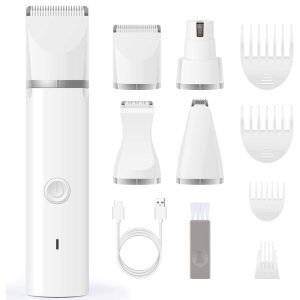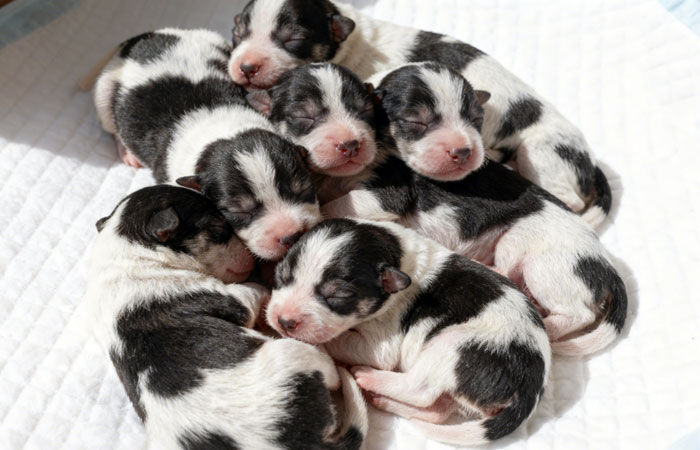How to care for 4 week old puppies
Four-week-old puppies are equally as delicate as human babies. Several first-time dog owners often express confusion and even worry about the health of the young dogs while they are in the process of figuring out the basic care of the puppies. Actually, by strictly following scientific raising methods and by not falling into the typical errors, you will be able to support the puppies during the turning point of their emotional growth and thus be able to ensure that their first step in life will be of good health.
I. Nutrition and Feeding
1. A litter of puppies of 4 weeks should be in the middle of the nursing and weaning period. One should prepare for the dog formula out of goat milk as the main foodstuff for the young ones and on the other hand, few fractions of the biscuit softened in warm water each dog should be mixed for our little stomach-flowers. The digestive system of puppies is still in the process of development and the goat milk formula is very digestible as well as it has the same nutritional value as the mother’s milk. Introducing some biscuits at the same time is a good way to help the pups get used to solid foods. Be sure to feed the puppies 4 to 6 times a day with the water being of about 38°C (100.4°F). An overfeeding may lead to diarrhea.
2. In this particular point of development, the young ones are lacking a complete set of teeth and as well their production of digestive enzymes is not sufficient for the processing of the normal food. Milk formulas for special consumption of dogs fed by goats usually come with lactase enzymes and immune-enhancing components in order to facilitate the digestion of lactose and at the same time to strengthen the immune system. The studies show that puppies have an immune vulnerability period after their birth, which lasts from the fourth until the sixth week and therefore the antibodies from the mother’s milk or the milk replacers are very important during this time. A good quality milk replacer for puppies is generally made from 28% to 32% protein and 15% to 20% fat, conforming to the international nutritional guidelines for puppies.
Well-known organizations in the field suggest a transition period for two to three weeks between weaning, and liquid diets gradually being changed to semi-liquid ones. The research shows that the rate of occurrence of digestive problems in puppies that are fed dry kibble too early is almost twice as high as that of those gradually transitioned. According to the body weight, a puppy is allowed about 200 kcal per kilogram per day. Since 100 ml of lamb milk contains approximately 120 kcal the energy requirement should be satisfied by more frequent feeding.
3. Do not feed the young ones with human milk, raw eggs, or grain-based foods. Milk of cows is full of lactose and thus it may cause diarrhea; raw eggs might come with some bacteria which are dangerous for you and your puppies. The data of the observation shows that puppies brought up according to scientific methods have significantly higher target weight and normal skeletal development at the age of 12 weeks compared to those randomly fed.
II. Health Maintenance
1. Deworming and Vaccination Schedule
After 20 days of age, puppies may get parasites from their mother. A monthly internal and external deworming is suggested. The initial core (distemper, parvovirus, etc.) vaccines can be given to a puppy after the age of 45 days for the first time, with boosters every three to four weeks. There are as many as three booster doses in total. To reduce the risk of infectious diseases, do not bathe your puppy or let it out until it is fully vaccinated.
2. Living Environment Hygiene
Make sure the puppies have a warm and dry place to rest. In the cold seasons, add more blankets or use a heater that is safe (the temperature should not be more than 28°C). Wash the dishes that are used for feeding and watering every day and let fresh water replace the old one immediately. If loose stools or diminished appetite occur, you may want to use pet-specific probiotics to help regulate the digestive tract.
3. Daily Physical Care
After 20 days of age, the gums of the little ones can be gently touched with a soft-bristled toothbrush to get them used to oral hygiene practices. No toothpaste is needed. Besides this, weekly ear canal checks for cleanliness together with paw pad inspection for wounds, should become regular routines of your care time. Hairy breeds have to be regularly groomed to avoid tangling.
III. Behavioral Guidance
1. Designated Elimination Area
The time when puppies have to poop is usually 10-15 minutes after eating. Therefore, bring them to a carpeted place during that time and offer them a treat after they have done their business. If there are any accidents, do not punish the puppies. What you should do is clean the place thoroughly with a non-stinging cleaner so that the smell disappears and therefore, the risk of accidents in the same spot is minimized.
2. Socialization and Emotional Support
After the age of two months, slowly expose your dog to different household noises and, if safe, allow it to mingle with calm-tempered animals. In this way, the chance of the little ones growing up to be scared of or aggressive towards something is significantly lower. A cessation of a dog’s dependence on its owner can be supported by the loving touch of the hand and a gentle voice, whereby the placement in the absence of the other should be as short as possible.
3. Basic Command Training
Behavioral patterns can be set by simple words such as “Sit” and “Stay”. To motivate the dog to obey the command, give him something to eat as a reward, and the training session, which should not last for more than five minutes, should be interactive and the dog together with you should be engaged.
admin
-
Sale!

Washable Pet Cooling Pad for Cats and Dogs
$10.99Original price was: $10.99.$9.99Current price is: $9.99. This product has multiple variants. The options may be chosen on the product page -
Sale!

Washable Cat Window Hammock Cooling Bed
$23.99Original price was: $23.99.$22.99Current price is: $22.99. -
Sale!

Tropical Amphibian Rainforest Tank, Lizard Cage
$38.99Original price was: $38.99.$36.99Current price is: $36.99. -
Sale!

Silent 4-in-1 Waterproof Charging Dog Hair Trimmer
$49.88Original price was: $49.88.$47.99Current price is: $47.99.
